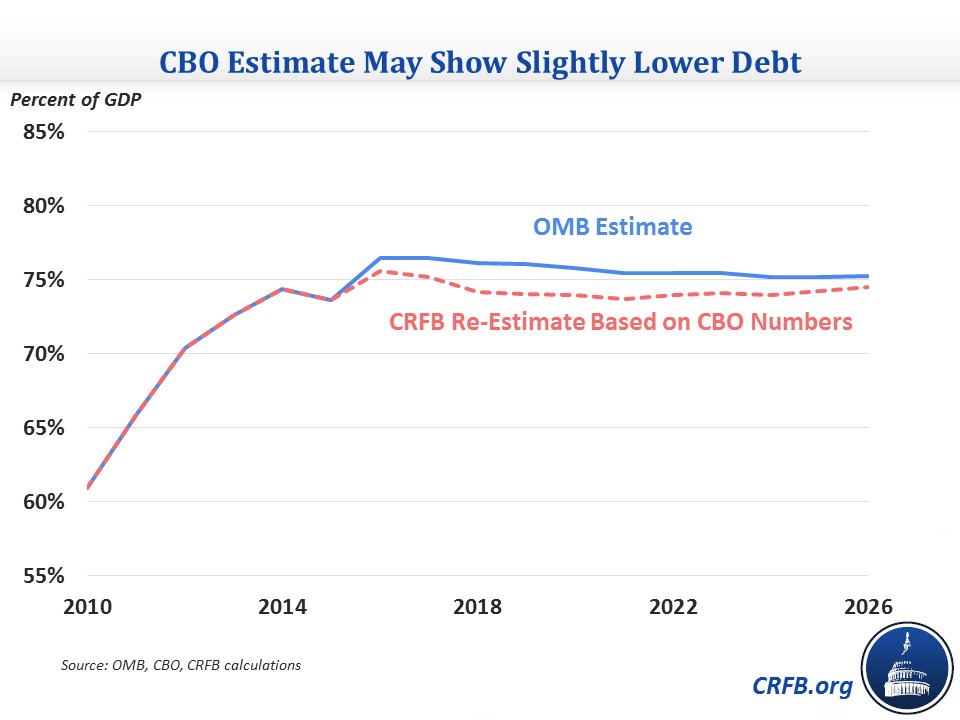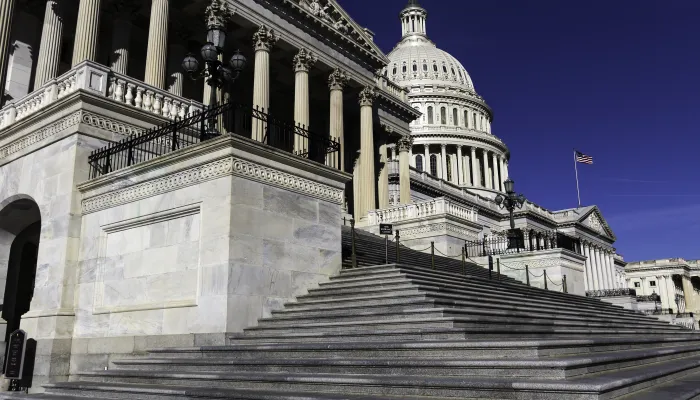Viewing the President's Budget Through a CBO Lens
The President’s Budget relies on assumptions from the Office of Management and Budget (OMB), but we estimate that when it is estimated by the Congressional Budget Office (CBO), debt would be slightly lower but on a more upward path.
CBO typically weighs in on the budget using their own budget projections and estimates of the President's policies. Sometimes these estimates vary wildly if the budget uses a lot of magic asterisks or very favorable economic assumptions, but CBO and OMB have generally been close in recent years. We predict that they will be similarly close this year.
To construct the estimate, we used CBO's January budget projections and OMB's estimates of the cost of all the budget's policies, only adjusting the policy estimates for the different baselines CBO and OMB use to calculate the sequester. OMB's estimate of the President's budget shows debt jumping from 74 percent of GDP in 2015 to 76.5 percent in 2016 before falling slightly to 75 percent and stabilizing at that level in the last few years.
Our estimate of what CBO would say shows debt jumping to only 75.6 percent in 2016, then falling to a low of 73.7 percent in 2021 before rising slightly to 74.5 percent by 2026. These different paths reflect the difference in CBO's and OMB's baselines: OMB projects higher debt in the near term but CBO projects a less favorable path of debt in later years.
The differences are also caused by economic projections: OMB projects GDP to be 2.3 percent higher than CBO by 2026. The increase is partially due to the fact that OMB's projections reflect the economic effects of the budget's policies, in particular immigration reform.

These are not official CBO numbers, and CBO's actual estimate in March will incorporate other factors. For one, CBO will have different estimates of the President's policies; for example, last year they estimated the policies would save $340 billion less than OMB did, which would translate to an additional 1.2 percent of GDP in debt by 2026 if it held true this time. Also, CBO will update their baseline ahead of the President's budget, which could add or subtract a few percent of GDP of debt (last year's new baseline subtracted 2 percent of GDP from debt in 2025). In particular, CBO has already said that they will update their economic projections in March to account for last year's tax deal and more recent economic data, which will slightly improve the outlook.
Still, our method has proved fairly accurate in the past. Assuming our projections are correct, CBO's re-estimate will tell a similar story to OMB's: the budget improves the fiscal status quo but still leaves debt at a very high level.

